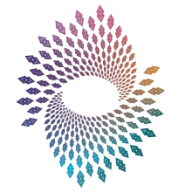Does Coaching Work? Let’s Look at the Neuroscience
- POSTED ON AUGUST 11, 2020

Few companies used coaching techniques before the 1980s to help their employees become the best they could be. But since then, the business coaching industry in the U.S. has grown exponentially. Business coaching revenue in the U.S. market now adds up to roughly $13.4 billion per year, and the market size of the industry is on track to increase by 1.1% this year. In fact, the market size of the business coaching industry in the U.S. has increased faster than that of the educational services sector overall in recent years — so much so that business coaching is now the eighth-ranked educational service industry by market size.
But Does Coaching Work?
Naturally, some people are skeptical about the benefits and effectiveness of coaching.
Finding a qualified coach is the key to having a successful experience. You may worry about choosing a coach who lacks professionalism, ethical practices, certification, and trustworthy training.
It’s important to spend some quality time selecting the right coach for your needs. You need to understand and outline what, exactly, you want to accomplish with your coach. You also want to make sure you have a rapport with your coach and the basis for respect and trust. Here are some questions to consider asking yourself before committing to the engagement:
- Do I want to work with a certified professional coach?
- How much experience do I want my coach to have?
- What do I want to get out of the coaching engagement?
- How will I know the chemistry is right with my coach?
- What kind of transformative change am I looking for?
- What practices, exercises, and approaches am I open to trying? What do I know doesn’t work?
- The Benefits of Brain-Based Coaching
Once considered unconventional, coaching has grown much more prominent in the past three decades in the development of outstanding business leaders. Science has played a part in this change, offering advanced insight into the functioning of the brain with tools such as functional magnetic resonance imaging (fMRI) that allows the decoding of brain activity.
The most beneficial aspect of coaching is that it provides a conversation that allows an individual to concentrate on the change they desire to make in life and helps push past the brain’s anti-change signals.
Neuro-Transformational Coaching
Let’s start by looking at the different parts of the brain.
- The prefrontal cortex is where change is initiated.
- The basal ganglia are the brain’s “automatic pilot.” These parts of the brain work, without thought, when an individual is involved with routine activities.
Unfortunately, the working memory in the prefrontal cortex (where change is initiated) tends to become tired quickly. For that reason, people automatically push as many thoughts, behaviors and activities to the basal ganglia as possible. As a result, habits settle in that part of the brain, and it can be difficult to change them.
The basal ganglia manages many simple work activities and personal habits. Often, people are completely unaware of how many activities they do that are completely automated by their basal ganglia. In essence, the more your basal ganglia automates important thoughts and activities, the more you are a passive participant in your life.
To change these automatic habits, a person needs to find a way to forge new circuits in the prefrontal cortex. Carving out these new circuits or passageways in the brain happens through a process called myelination.
With enough attention and focus, we can rewire our brains with our thoughts. The more a neural pathway is used, the stronger it becomes. Every time we repeat an action, a fatty covering called myelin coats the neural pathway, making the connection stronger and more secure.
Focusing on changing thought processes and habits is extremely difficult to do on your own. That’s where a certified coach can help you. Coaches are experts at keeping you (your brain and your body) engaged in new thoughts and behaviors. Essentially, when you engage in coaching, you are setting up a structure for yourself to create and deepen those new circuits in your prefrontal cortex so that eventually your thought process and behaviors work in a way that supports you in achieving the vision you have for yourself.
Another benefit of regular coaching is that the process also builds the capacity in your brain to resist homeostasis (i.e., the automatic physiological process that opposes change from happening) and supports long-term transformation.
Neuroscience Research Supports the Co-Active Methodology
Neuroscience research has shown that Co-Active Coaching supports clients to develop positive new neural networks, respond more calmly to stress, make choices more easily, and access much more of their creativity. This inevitably leads to more effective, successful, and fulfilling lives.
Let’s explore some powerful links between the widely used Co-Active Model, applied successfully for almost 30 years to coaching, and some of the scientific research that suggests why this methodology of coaching is highly effective and produces transformative results.
The Co-Active Model includes four cornerstones:
- The first of the cornerstones is the belief that people are naturally creative, resourceful, and whole.
That is, everyone can and should find their own answers. People aren’t broken, they don’t need fixing, and they can recover and learn. This cornerstone is more than just seeing the best in people. It is a fundamental view that people are inherently undamaged, capable, and inventive.
Why is this important? The brain is highly reactive to perceived threats to status. Research has found that when people are being evaluated or judged by others, they perceive this as a risk and, subsequently, their cortisol levels (an indicator of stress) increase. When the brain is influenced by the chemicals associated with stress, it is less creative and less able to think of long-term solutions.
Because there is no judgment or evaluation in Co-Active Coaching, clients remain open to input and are much more able to access their own unique creativity.
The fundamental and uncompromising view of Co-Active Coaches that their clients are naturally creative, resourceful, and whole enables clients to access their own creativity and resourcefulness. - The second cornerstone is the commitment to dance in this moment.
Co-Active Coaches are trained to be fully present in the here and now, open and flexible and ready to respond. Sessions guided by Co-Active Coaches never follow a program or script. Instead, they follow what is happening in each moment of the conversation.
There is scientific evidence that an electromagnetic or “energetic” communication system operates just below our conscious awareness. The process of having collaborative conversations that are emotionally attuned and non-directive builds positive neural connections in the brain.
In addition, Co-Active Coaching conversations provide clients with genuine, meaningful acknowledgements, encouragement, and appreciation — creating an ideal container for a client to learn and grow. According to research, connected conversation with a present and open coach has a positive impact on the brain. - The third cornerstone is to focus on the whole person.
Coaches who follow the Co-Active Model work with the entire heart, mind, body and spirit of their clients, rather than simply focusing on a client’s individual problem.
Human beings are extremely complex, and the more we can integrate and be agile with this complexity, the better. Helping clients access both hemispheres of their brain — logical and emotional — not only opens up new solutions and creativity in the client but also builds lasting connections that can be used for future problem-solving. - The fourth cornerstone is to evoke transformation. Co-Active Coaches are committed to helping clients expand their consciousness and
move beyond simply managing their “to do” lists. They help their clients develop new
capacities to tackle whatever life throws their way.
By guiding clients to constantly expand their consciousness, Co-Active Coaches support the process of myelination, making those new neural pathways and connections stronger and more secure.
Working with a Co-Active Coach will enable you to rewire your brain in ways that create openness, creativity, and the optimal environment for neuroplasticity, leading to lasting, transformative change.





